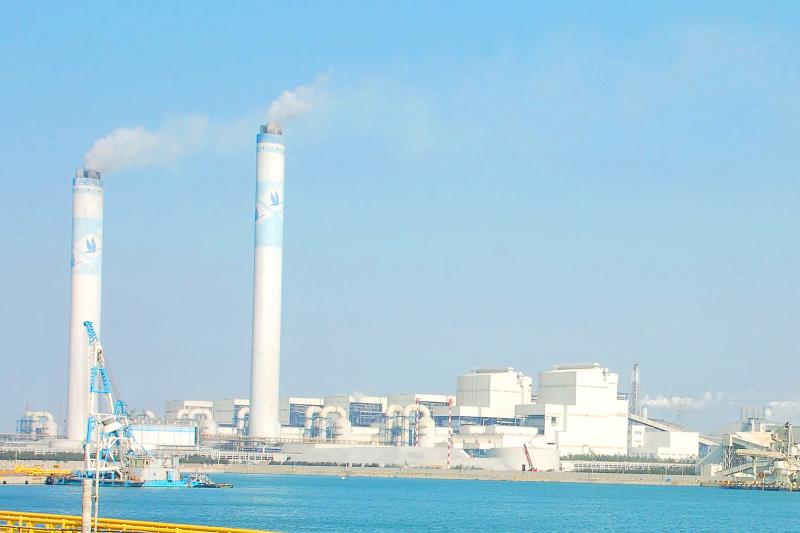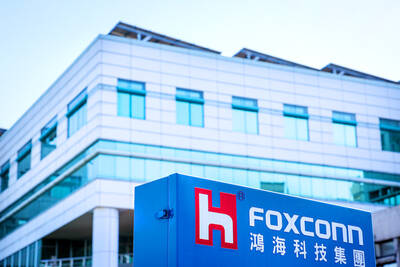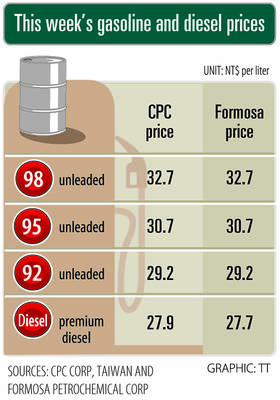Formosa Plastics Corp (台灣塑膠), the flagship entity of Formosa Plastics Group (台塑集團), yesterday said that it would build a new manufacturing site in Texas at a cost of US$207 million.
When completed, the plant would have an annual capacity of 100,000 tonnes of alpha olefins, which are used to make high-density polyethylene (HDPE), among other products, the company said.
About 63,000 tonnes would be used by Formosa Plastics, while the remaining 37,000 tonnes would be sold on the international market, it said.

Photo: CNA
The projected completion date of the plant is October 2025, and mass production is scheduled for December that year after a trial run, the company said.
One of the company’s goals in building the plant in Texas is to secure raw material supply for the production of HDPE, it said, adding that alpha olefins are in high demand worldwide.
Citing a recent report by market information advisory firm IHS Markit, Formosa Plastics said that demand for alpha olefins in North America is expected to hit 915,000 tonnes in 2025, but supply would be only 878,000 tonnes.
The new Texas investment is to be funded by a loan of about US$138 million and capital injection of US$70 million in its fully owned US-based subsidiary Formosa Industrial Corp.
The group has production sites in Texas and Louisiana, where its four major units — Formosa Plastics, Nan Ya Plastics Corp (南亞塑膠), Formosa Chemicals & Fibre Corp (台灣化學纖維) and Formosa Petrochemical Corp (台塑石化) — manufacture petrochemical products such as HDPE, low-density polyethylene (LDPE), ethylene, propylene, polypropylene and ethylene glycol (EG).
The four units on Friday reported mixed revenue results for last month amid China’s anti-epidemic measures, the Russia-Ukraine war and rising inflationary pressure around the world, according to their regulatory filings.
Formosa Chemicals, which manufactures aromatics and styrenics, saw revenue edge up 0.1 percent monthly and 10.2 percent annually to NT$36.42 billion (US$1.23 billion), as price hikes in response to rising crude oil costs offset the impact of lower sales volume.
The other three companies all saw sequential revenue declines, with Nan Ya Plastics registering the biggest drop of 19.7 percent to NT$29.7 billion, as China’s harsh lockdown measures, the Russia-Ukraine war, planned EG production cuts, and changes in consumption caused by inflation affected sales volume and prices.
Compared with April last year, revenue decreased 14.9 percent, said the producer of electronic materials, polyester products, chemical products and plastic products, among others.
Formosa Plastic reported a 5 percent month-on-month decrease in revenue to NT$25.15 billion, but a 3.2 percent increase from a year earlier. The company blamed the monthly revenue drop on declining sales volume of polyethylene and polypropylene.
Formosa Petrochemical, the nation’s only listed oil refiner, reported that revenue dropped 5 percent month-on-month to NT$65.35 billion, as declining sales at its naphtha cracking business offset rising sales at its refining business.
On an annual basis, revenue increased 40.4 percent because of higher product prices this year, the firm said.
In the first four months of the year, Formosa Petrochemical reported the highest annual increase of 41.9 percent in revenue to NT$250.9 billion, ahead of Formosa Plastics’ 13.2 percent increase to NT$96.15 billion, Formosa Chemicals’ 12.5 percent rise to NT$131.82 billion and Nan Ya’s 5.8 percent growth to NT$131.79 billion, companies’ data showed.

Hon Hai Precision Industry Co (鴻海精密) yesterday said that its research institute has launched its first advanced artificial intelligence (AI) large language model (LLM) using traditional Chinese, with technology assistance from Nvidia Corp. Hon Hai, also known as Foxconn Technology Group (富士康科技集團), said the LLM, FoxBrain, is expected to improve its data analysis capabilities for smart manufacturing, and electric vehicle and smart city development. An LLM is a type of AI trained on vast amounts of text data and uses deep learning techniques, particularly neural networks, to process and generate language. They are essential for building and improving AI-powered servers. Nvidia provided assistance

DOMESTIC SUPPLY: The probe comes as Donald Trump has called for the repeal of the US$52.7 billion CHIPS and Science Act, which the US Congress passed in 2022 The Office of the US Trade Representative is to hold a hearing tomorrow into older Chinese-made “legacy” semiconductors that could heap more US tariffs on chips from China that power everyday goods from cars to washing machines to telecoms equipment. The probe, which began during former US president Joe Biden’s tenure in December last year, aims to protect US and other semiconductor producers from China’s massive state-driven buildup of domestic chip supply. A 50 percent US tariff on Chinese semiconductors began on Jan. 1. Legacy chips use older manufacturing processes introduced more than a decade ago and are often far simpler than

STILL HOPEFUL: Delayed payment of NT$5.35 billion from an Indian server client sent its earnings plunging last year, but the firm expects a gradual pickup ahead Asustek Computer Inc (華碩), the world’s No. 5 PC vendor, yesterday reported an 87 percent slump in net profit for last year, dragged by a massive overdue payment from an Indian cloud service provider. The Indian customer has delayed payment totaling NT$5.35 billion (US$162.7 million), Asustek chief financial officer Nick Wu (吳長榮) told an online earnings conference. Asustek shipped servers to India between April and June last year. The customer told Asustek that it is launching multiple fundraising projects and expected to repay the debt in the short term, Wu said. The Indian customer accounted for less than 10 percent to Asustek’s

Gasoline and diesel prices this week are to decrease NT$0.5 and NT$1 per liter respectively as international crude prices continued to fall last week, CPC Corp, Taiwan (CPC, 台灣中油) and Formosa Petrochemical Corp (台塑石化) said yesterday. Effective today, gasoline prices at CPC and Formosa stations are to decrease to NT$29.2, NT$30.7 and NT$32.7 per liter for 92, 95 and 98-octane unleaded gasoline respectively, while premium diesel is to cost NT$27.9 per liter at CPC stations and NT$27.7 at Formosa pumps, the companies said in separate statements. Global crude oil prices dropped last week after the eight OPEC+ members said they would